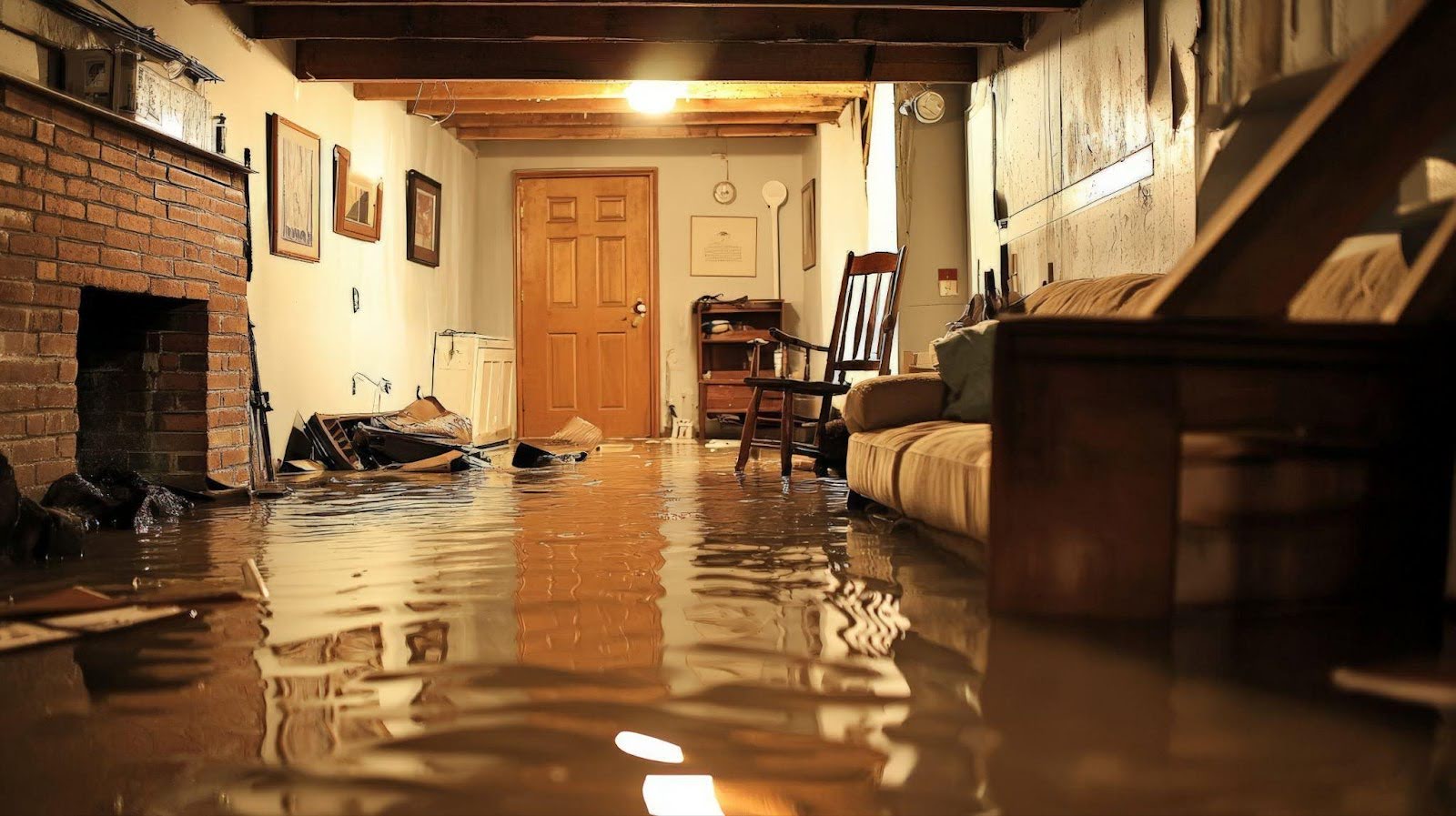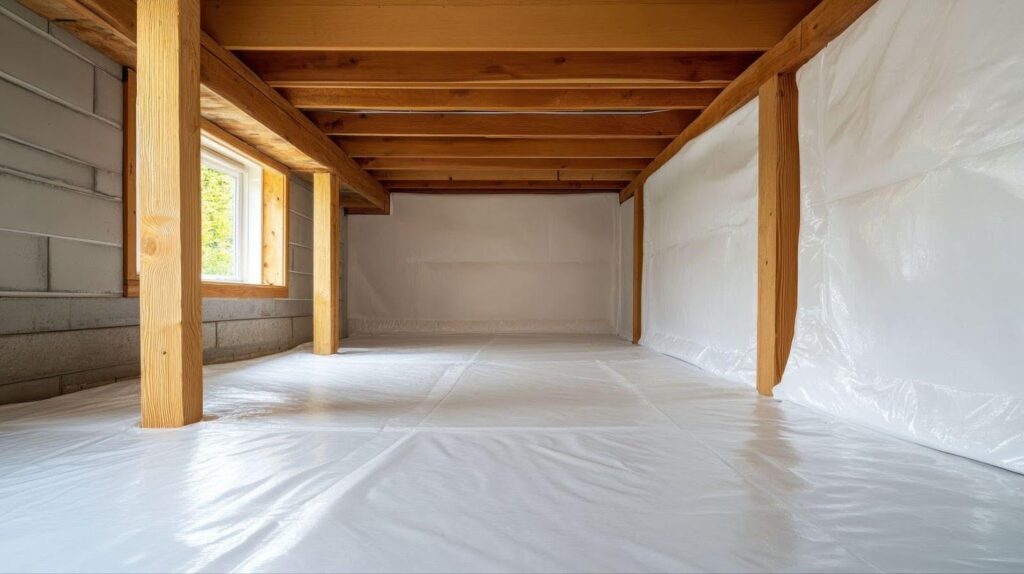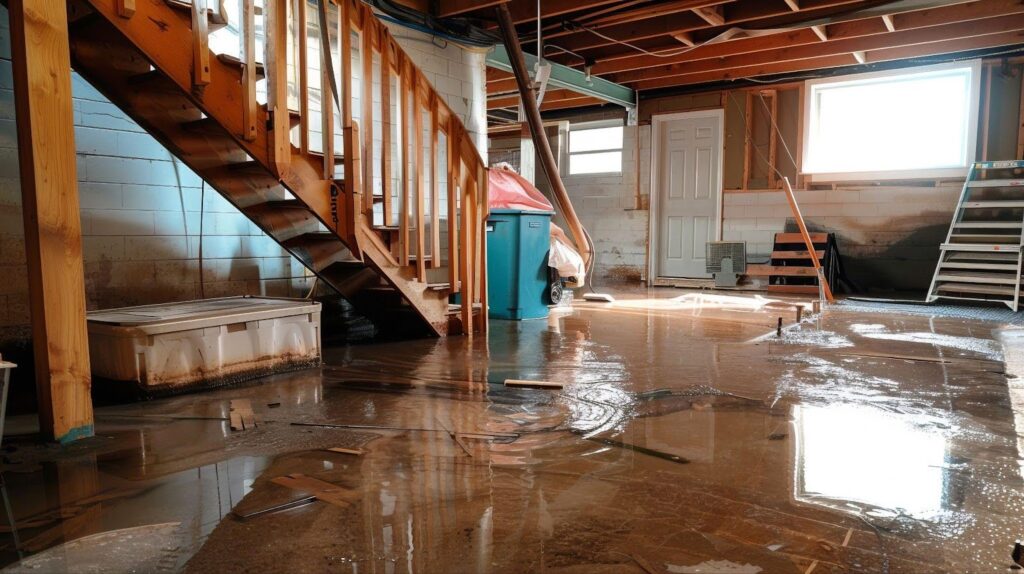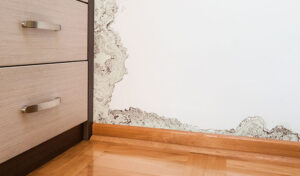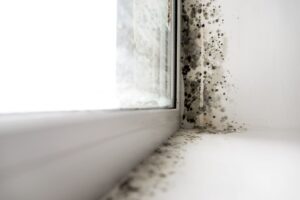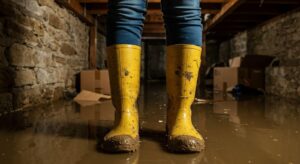Basement water damage goes far beyond a soggy mess. It threatens your home’s structural integrity, reduces property value, and poses serious health risks. Moisture weakens foundations, warps wood, corrodes pipes, and encourages mold growth, severely impacting indoor air quality. Ignoring the early signs often leads to expensive repairs and long-term complications.
Basements naturally face more risk because they sit below ground level. Rainfall, melting snow, and poor irrigation saturate the soil surrounding your home. As the ground becomes oversaturated, water builds pressure and forces its way through foundation cracks, porous walls, and unsealed joints.
Poor grading, clogged gutters, and failing drainage systems direct even more water toward your home rather than away from it.
Even without visible flooding, moisture and humidity silently do damage. Plumbing leaks, condensation, and high humidity create the perfect environment for mildew, mold, and material deterioration.
This guide walks you through proven strategies to protect your basement from water intrusion. From improving exterior drainage to interior waterproofing and everyday maintenance, you’ll learn how to prevent costly damage and maintain a dry, healthy, and secure home.
Inspecting your basement for warning signs
Routine inspections help you spot problems before they turn into costly repairs. Start by checking for visible signs of moisture. Look for damp spots on walls, water stains on the floor, and condensation on windows or pipes. These indicators suggest water has already found its way into your basement.
Trust your nose as well as your eyes. A persistent musty odor often points to mold or mildew growth, even if you don’t see it right away. Mold thrives in dark, humid environments and typically hides behind walls, under flooring, or in corners with limited airflow.
Examine your basement’s structure closely. Cracks in walls, floors, or around window frames signal shifting foundations or hydrostatic pressure from saturated soil outside. Even small fissures provide a direct pathway for moisture. Monitor these areas regularly and note any changes in size or shape.
Inspecting your basement thoroughly and frequently gives you a better understanding of its condition and allows you to take action at the first sign of trouble. This proactive approach helps you prevent water damage and maintain a healthier, safer home environment.
Exterior prevention strategies
Protecting your basement from water damage starts outside your home. By controlling how water flows around your foundation, you reduce the chance of leaks, seepage, and long-term structural issues.
Maintain your gutters and downspouts
Clean gutters regularly to keep leaves and debris from blocking water flow. When gutters overflow, rainwater cascades down your exterior walls and pools near the foundation. Secure downspout extensions that direct water at least six feet away from your home. This simple adjustment prevents soil saturation and pressure buildup against the basement walls.
Grade the soil properly
Check the slope around your home. Soil should angle downward, away from the foundation, to encourage runoff to drain outward rather than accumulate. If the ground near your home is flat or slopes inward, bring in topsoil to create a gentle decline. This helps minimize water intrusion and protects your basement over time.
Landscape with purpose
Choose plants that thrive in moist conditions and place them at a safe distance from your home. Avoid dense mulch near the foundation, which traps moisture and contributes to water pooling. Use gravel or river rock in these areas to promote better drainage. Create a buffer zone with low-maintenance greenery to absorb excess water and prevent it from seeping toward your basement walls.
These exterior improvements form the first line of defense against water damage. With proper planning and routine maintenance, you create a drier, more resilient basement environment.
Waterproofing your basement
Protecting your basement from water damage requires more than surface fixes. A well-sealed and properly drained space reduces moisture buildup, protects valuables, and maintains your home’s structural integrity.
Seal cracks and gaps
Start by inspecting your basement walls and floors for visible cracks or small openings. Use hydraulic cement to patch larger gaps where water tends to seep through.
Apply waterproof caulk or epoxy filler to smaller hairline cracks. Pay close attention to areas around pipes, windows, and floor joints where moisture often sneaks in.
Apply waterproof paints and sealants
Waterproof coatings provide an extra layer of defense. Apply masonry waterproofing paint or elastomeric sealants to interior basement walls. These products block water vapor and reduce dampness without compromising breathability.
Install interior drainage systems
If you notice consistent water pooling or dampness, install an interior drainage solution. French drains collect groundwater and channel it to a sump pump, which then directs water safely outside.
A sump pump with a battery backup ensures continued operation during power outages. Vapor barriers help reduce condensation on walls and floors, especially in finished basements. Combined, these systems help keep your space dry even during heavy rainfall or snowmelt.
Maintaining plumbing and appliances
Your plumbing system and water-dependent appliances play a major role in keeping your basement dry. Even minor issues lead to significant water damage if left unchecked. Regular maintenance and monitoring ensure these systems function efficiently and don’t introduce unwanted moisture into your home.
Inspect water heaters, washing machines, and HVAC systems
Start with the major appliances. Check your water heater for signs of rust, sediment buildup, or leaks around the base. Flush the tank annually to remove debris and prolong its life. Inspect washing machine hoses for bulges, cracks, or loose fittings. Use braided stainless steel hoses for added durability.
Examine your HVAC system’s drainage and condensation lines to ensure they flow freely and don’t drip near walls or flooring.
Look for pipe condensation, corrosion, or leaks
Moisture from condensation on cold water pipes often goes unnoticed but contributes to mold and mildew growth over time. Wrap exposed pipes in foam insulation to minimize condensation. Check for corrosion, drips, or puddles around joints and fittings. A slow leak may seem insignificant at first, but it can damage insulation, wood framing, and drywall if ignored.
Install water leak detectors
Smart leak detectors provide an extra layer of protection. Place them near appliances, under sinks, and in corners where water might accumulate. These devices sound an alarm and send alerts to your phone when they detect moisture, giving you time to act before a small leak turns into a major problem.
Controlling moisture with a dehumidifier
Basements often trap moisture due to poor airflow and proximity to groundwater. High humidity fuels mold, mildew, and musty odors, putting your home and health at risk. A properly sized dehumidifier helps maintain safe humidity levels and prevents hidden damage.
Choose a unit that matches your basement’s size and moisture level. Look for features like auto-shutoff, drainage options, and a built-in hygrometer. Place it near damp areas with space for airflow, and clean the filter regularly. Consistent use keeps your basement dry, fresh, and mold-free.
When to call a professional
Sometimes, DIY fixes only offer short-term relief. When water problems persist or moisture keeps returning, it’s time to bring in the experts. Knowing when to call a professional helps protect your home from long-term damage and costly repairs.
Persistent leaks or unexplained moisture
If you’ve sealed cracks, adjusted grading, and maintained gutters but still notice wet spots or dampness, you’re likely dealing with a deeper issue. Water may be entering through hidden sources or underground pathways that require professional detection tools and solutions. Ignoring persistent leaks allows mold and structural damage to take hold.
Structural concerns or recurring flooding
Visible foundation cracks, bowing walls, or repeated basement flooding signal serious problems. These issues threaten your home’s stability and safety. A licensed contractor or structural engineer should evaluate these conditions immediately. The longer you wait, the more extensive the repairs become.
Importance of working with certified waterproofing and restoration experts
Professionals offer more than temporary fixes. Certified waterproofing contractors assess the full scope of the problem and recommend solutions like sump pump installations, interior drainage systems, or exterior waterproofing.
Restoration experts also clean, dry, and decontaminate spaces affected by water, preventing mold and preserving air quality. Look for companies with experience, positive reviews, and relevant certifications to ensure the job gets done right.
Protect your basement — and your home — with expert help from Total Flood and Fire Restoration
For peace of mind and long-term protection, trust the Total Flood and Fire Restoration Experts. Our certified team specializes in basement waterproofing, moisture control, and structural restoration. Whether you’re dealing with persistent leaks, recent flooding, or want to prevent future damage, we’ll restore safety and confidence to your home.
Contact Total Flood and Fire Restoration today to safeguard your space before water takes its toll.

